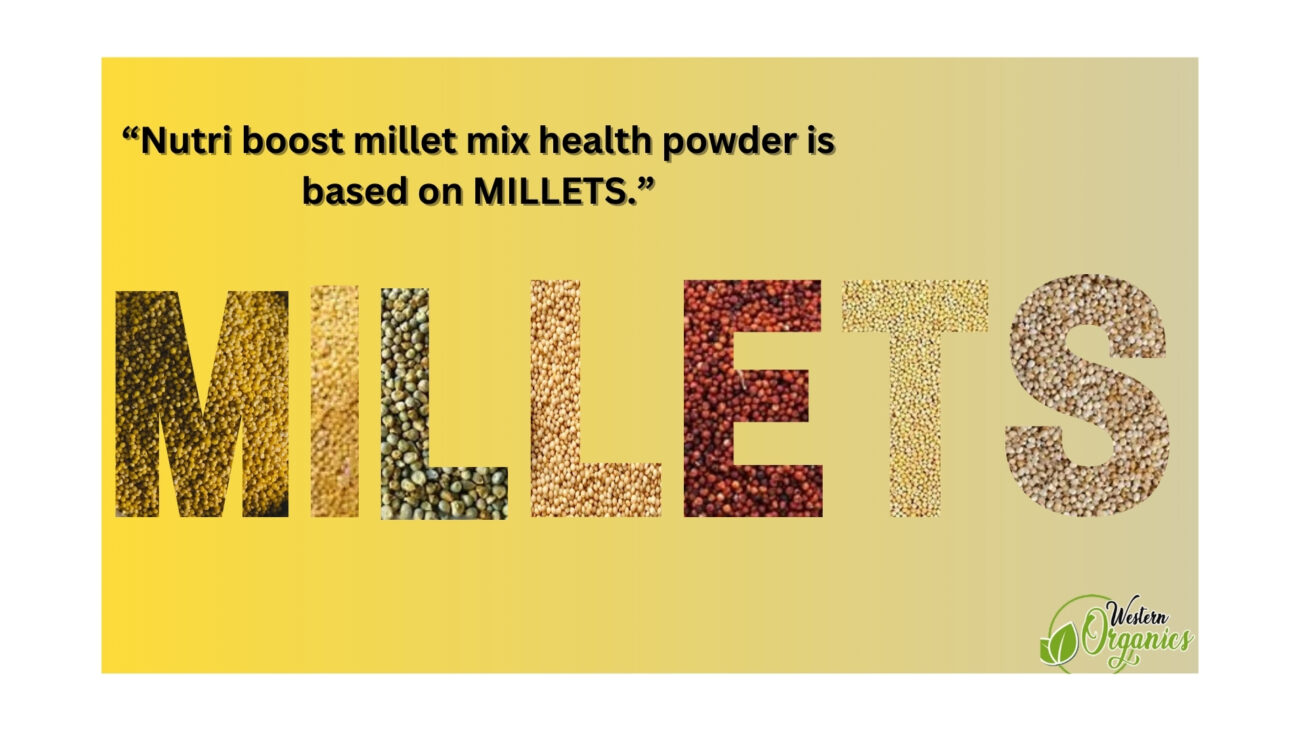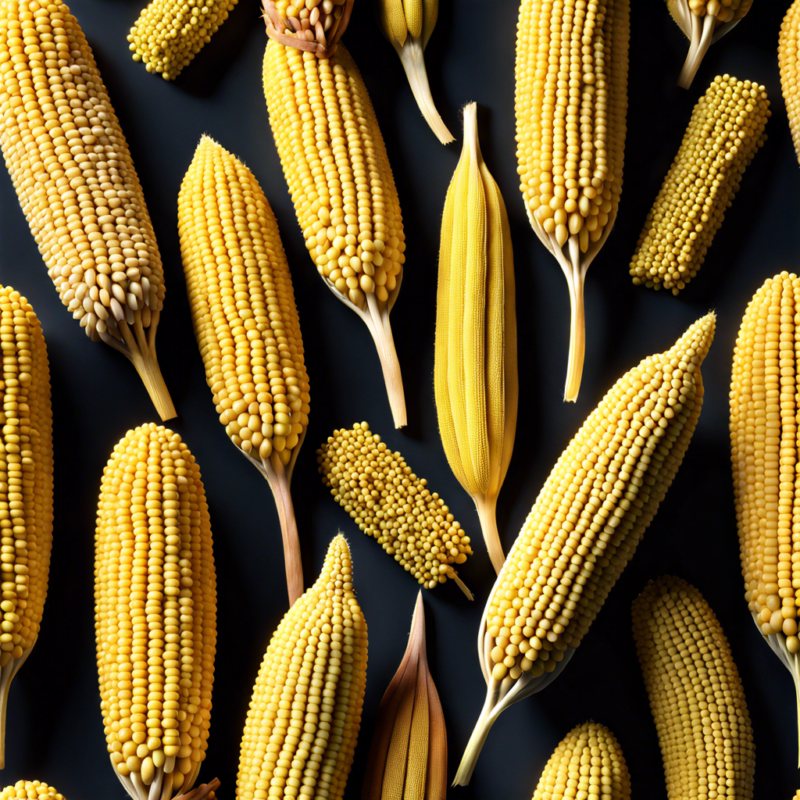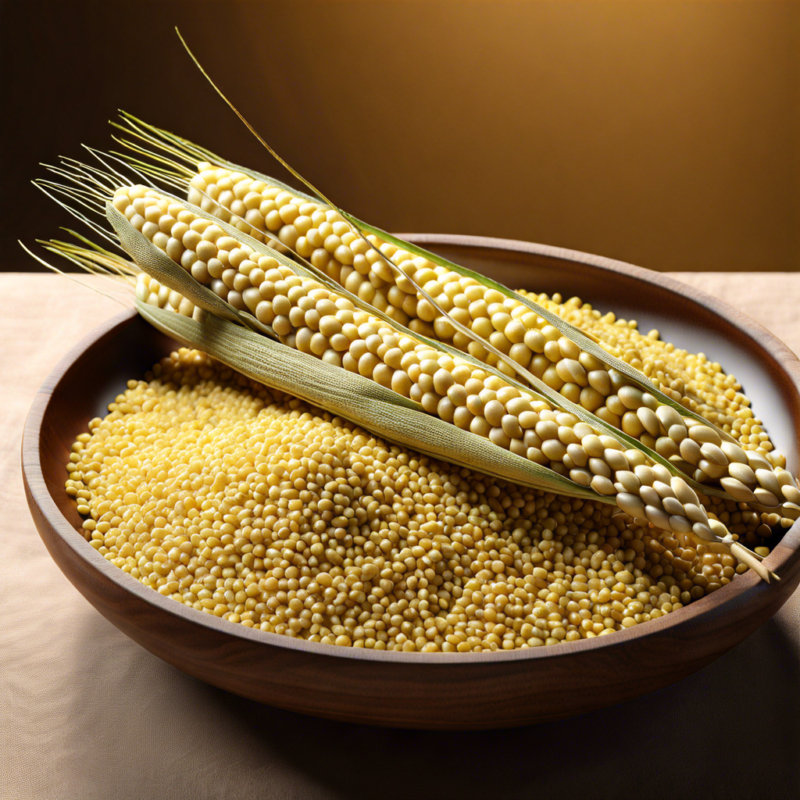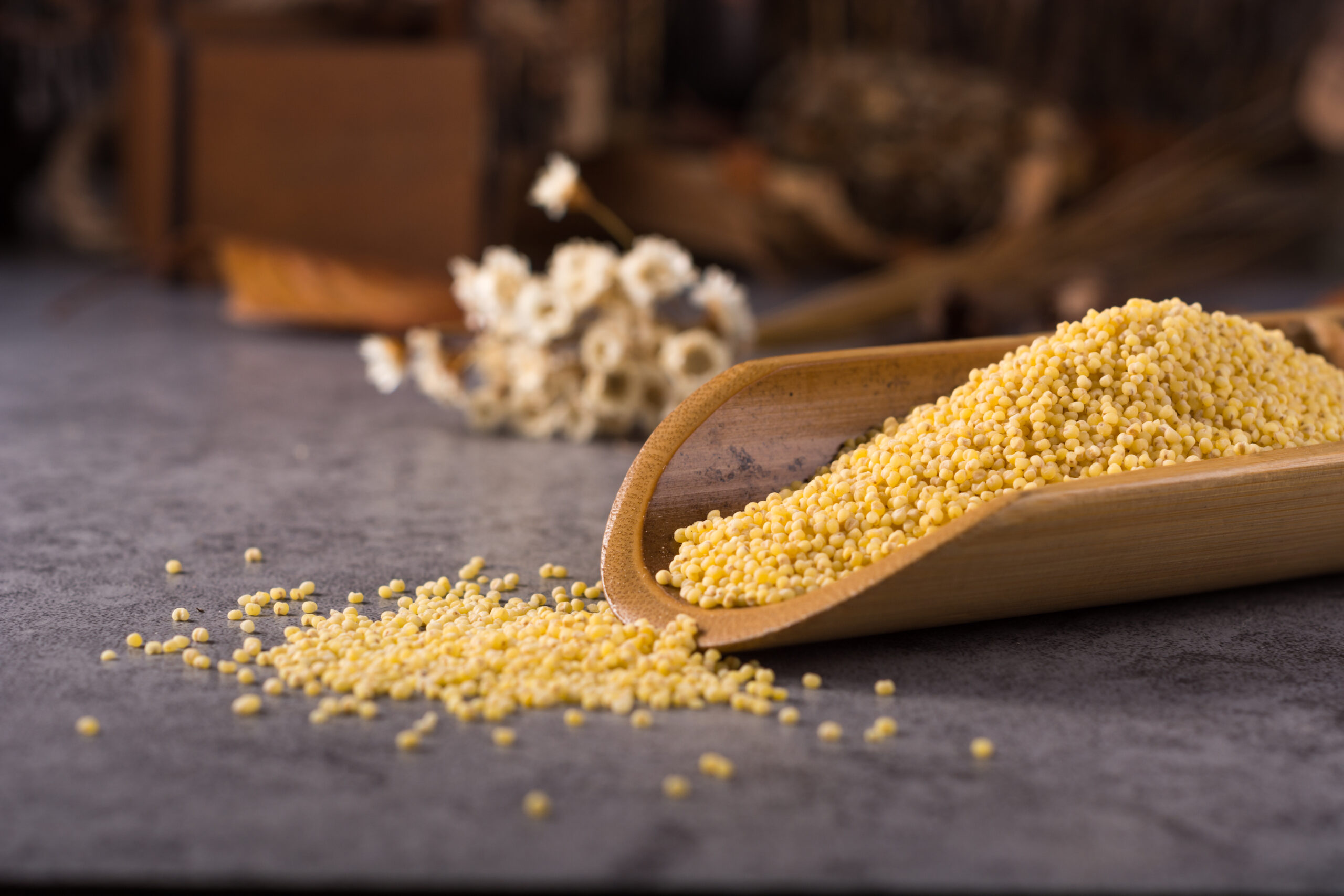Millet is one of the oldest cultivated grains in the world and has been grown
throughout Africa and Southeast Asia for thousands of years. Today, it's one of the
most important cereals around and is a staple crop for humans.
The smallround grains are so important because they're hardy and easy to store for
years withoutinsect damage.
Millet's
Millets are a nutritionally rich and environmentally sustainable crop with a long history of cultivation and use. Their benefits extend beyond nutrition to include ecological sustainability, making them an important crop for the future of global food security.
Millets are a diverse group of small-seeded grasses that are cultivated worldwide, particularly in Asia and Africa. These ancient grains have been a staple food in many cultures for thousands of years, prized for their resilience to harsh growing conditions such as drought and poor soil quality. Unlike more commonly consumed grains like wheat and rice, millets are naturally gluten-free, making them an excellent dietary option for those with celiac disease or gluten sensitivity. They come in various types, including pearl millet, finger millet, foxtail millet, and sorghum, each offering unique flavors and textures. Millets are nutritional powerhouses, rich in essential nutrients like proteins, dietary fiber, vitamins, and minerals such as iron, magnesium, and calcium. They have a low glycemic index, which helps regulate blood sugar levels, making them particularly beneficial for diabetics. Moreover, millets are high in antioxidants, which combat oxidative stress and reduce inflammation in the body. The environmental benefits of millets are equally significant; they require less water and fewer inputs, making them a sustainable choice for agriculture in arid and semi-arid regions. In addition to being versatile in the kitchen—used in everything from porridges and flatbreads to fermented beverages—millets are increasingly recognized for their role in promoting food security and sustainable agriculture. Their cultivation supports biodiversity and helps preserve traditional farming practices, offering a promising future for both human health and the environment.
Historical Background
Millets are among the oldest cultivated crops, with evidence of their use dating back to around 10,000 years ago. They were first domesticated in regions of East Asia, specifically in China and the Korean Peninsula. In Africa, millet cultivation dates back to at least 3000 BCE, particularly in the Sahel region.
The spread of millets to other parts of the world occurred through trade and migration. They were introduced to Europe and the Americas through trade routes and colonial expansion. In India, millets have been a staple food for centuries, particularly in the southern and western regions.
https://www.millets.res.in/pub/2018/The_Story_of_Millets.pdf
Cultivation and Usage
Millets are typically grown in semi-arid regions and can be cultivated with minimal water. They have a short growing season, making them an ideal crop for areas with unpredictable rainfall.
Millets are versatile in culinary applications. They can be used to make porridge, bread, cakes, and alcoholic beverages. In India, millets are often ground into flour to make flatbreads like roti or used in dishes like upma and khichdi. In Africa, they are used to make traditional dishes like porridge and beer.

Types Of Milets
Millets are a diverse group of small-seeded grains that come in several varieties, each with its own unique nutritional profile and culinary uses https://yummy-valley.com/blog/types-of-millet/. Here are the main types of millets:
1. Pearl Millet (Pennisetum glaucum)
- Other Names: Bajra (India), Bulrush Millet
- Characteristics: Pearl millet has a distinctive pearl-like appearance and is one of the most commonly grown millet types. It is highly drought-resistant and can thrive in arid climates.
- Nutritional Benefits: Rich in protein, fiber, magnesium, and iron. It's known for its ability to maintain body temperature and is often consumed during the winter months in some cultures.
2. Finger Millet (Eleusine coracana)
- Other Names: Ragi (India), Nachni
- Characteristics: This millet has tiny seeds and is highly adaptable to various growing conditions. It is often used in traditional diets in India and Africa.
- Nutritional Benefits: Exceptionally high in calcium and iron, making it beneficial for bone health. It also contains essential amino acids and is a good source of dietary fiber.
3. Foxtail Millet (Setaria italica)
- Other Names: Kangni (India), Italian Millet
- Characteristics: Known for its slender, cylindrical grains, foxtail millet is one of the oldest cultivated millets. It has a slightly sweet flavor.
- Nutritional Benefits: High in dietary fiber, protein, and B vitamins. It is considered beneficial for heart health and weight management.
4. Proso Millet (Panicum miliaceum)
- Other Names: Common Millet, White Millet
- Characteristics: Proso millet has a short growing season and is often used in birdseed mixes. It has a mild, neutral flavor and is gluten-free.
- Nutritional Benefits: High in protein and antioxidants, with a good balance of essential amino acids. It also contains B vitamins and minerals like magnesium and phosphorus.
5. Barnyard Millet (Echinochloa esculenta)
- Other Names: Sanwa (India), Japanese Millet
- Characteristics: Barnyard millet grows quickly and is known for its drought tolerance. It has small, white, round grains.
- Nutritional Benefits: High in dietary fiber and iron. It's considered beneficial for managing diabetes and maintaining gut health.
6. Kodo Millet (Paspalum scrobiculatum)
- Other Names: Kodon (India), Varagu
- Characteristics: Kodo millet has a slightly larger grain compared to other millets and has a nutty flavor.
- Nutritional Benefits: Rich in dietary fiber, protein, and essential minerals like iron and magnesium. It's known for its low glycemic index, making it suitable for diabetics.
7. Little Millet (Panicum sumatrense)
- Other Names: Samai (India), Small Millet
- Characteristics: Little millet has tiny grains and is often used in porridges and snacks.
- Nutritional Benefits: High in iron, dietary fiber, and antioxidants. It is known for its cooling properties and is often consumed in hot climates.
8. Sorghum (Sorghum bicolor)
- Other Names: Jowar (India), Great Millet
- Characteristics: Sorghum is a large-seeded grain that is often included in the millet family due to similar uses and nutritional properties.
- Nutritional Benefits: Rich in protein, fiber, and antioxidants. Sorghum is gluten-free and has a low glycemic index, making it suitable for those with gluten intolerance and diabetes.
9. Teff (Eragrostis tef)
- Other Names: Teff Millet
- Characteristics: Native to Ethiopia, teff has very small grains and is a staple in Ethiopian cuisine.
- Nutritional Benefits: High in protein, fiber, and essential amino acids. It's particularly rich in iron and calcium.
Each type of millet has its own unique taste, texture, and nutritional benefits, making them versatile ingredients in various culinary traditions around the world.

Benefits of millet's
Millets offer a range of health benefits due to their rich nutritional profile and unique properties. Here are some of the key benefits of incorporating millets into your diet:
1. Nutritional Richness
- High in Fiber: Millets are an excellent source of dietary fiber, which aids in digestion, prevents constipation, and promotes gut health. The fiber content also contributes to a feeling of fullness, helping with weight management.
- Rich in Essential Nutrients: They are packed with vitamins and minerals, including B vitamins (such as niacin, B6, and folic acid), magnesium, iron, calcium, and potassium. These nutrients support overall health, including bone and muscle function, energy production, and immune system support.
2. Gluten-Free
- Millets are naturally gluten-free, making them a safe and nutritious option for individuals with celiac disease or gluten sensitivity. This also makes them a versatile alternative to wheat-based products.
3. Low Glycemic Index
- Millets have a low glycemic index (GI), which means they release sugar slowly into the bloodstream. This helps regulate blood sugar levels and reduces the risk of spikes and crashes, making them an ideal food for people with diabetes.
4. Heart Health
- The high levels of magnesium and potassium in millets help to regulate blood pressure and support cardiovascular health. They also contain beneficial compounds like lignans, which are thought to have heart-protective effects.
5. Antioxidant Properties
- Millets are rich in antioxidants, including phenolic acids, flavonoids, and tannins. These compounds help neutralize harmful free radicals in the body, reducing oxidative stress and inflammation. This may lower the risk of chronic diseases such as cancer and heart disease.
6. Weight Management
- The high fiber content in millets promotes satiety, helping to control appetite and reduce overall calorie intake. This makes them a valuable addition to a weight management or weight loss diet.
7. Digestive Health
- The fiber in millets not only aids digestion but also supports the growth of beneficial gut bacteria. This can enhance overall digestive health and prevent issues like constipation and irritable bowel syndrome (IBS).
8. Bone Health
- Certain types of millets, like finger millet, are particularly high in calcium, which is essential for maintaining strong bones and teeth. This makes them beneficial for individuals at risk of osteoporosis or other bone-related conditions.
9. Sustainable and Environmentally Friendly
- Millets are resilient crops that require less water and are capable of growing in poor soil conditions. This makes them an environmentally sustainable choice, as they have a lower ecological footprint compared to other grains like rice and wheat.
10. Versatility in Cooking
- Millets can be used in a wide variety of dishes, from porridges and salads to breads and desserts. Their versatility makes them an easy and nutritious addition to any diet.



